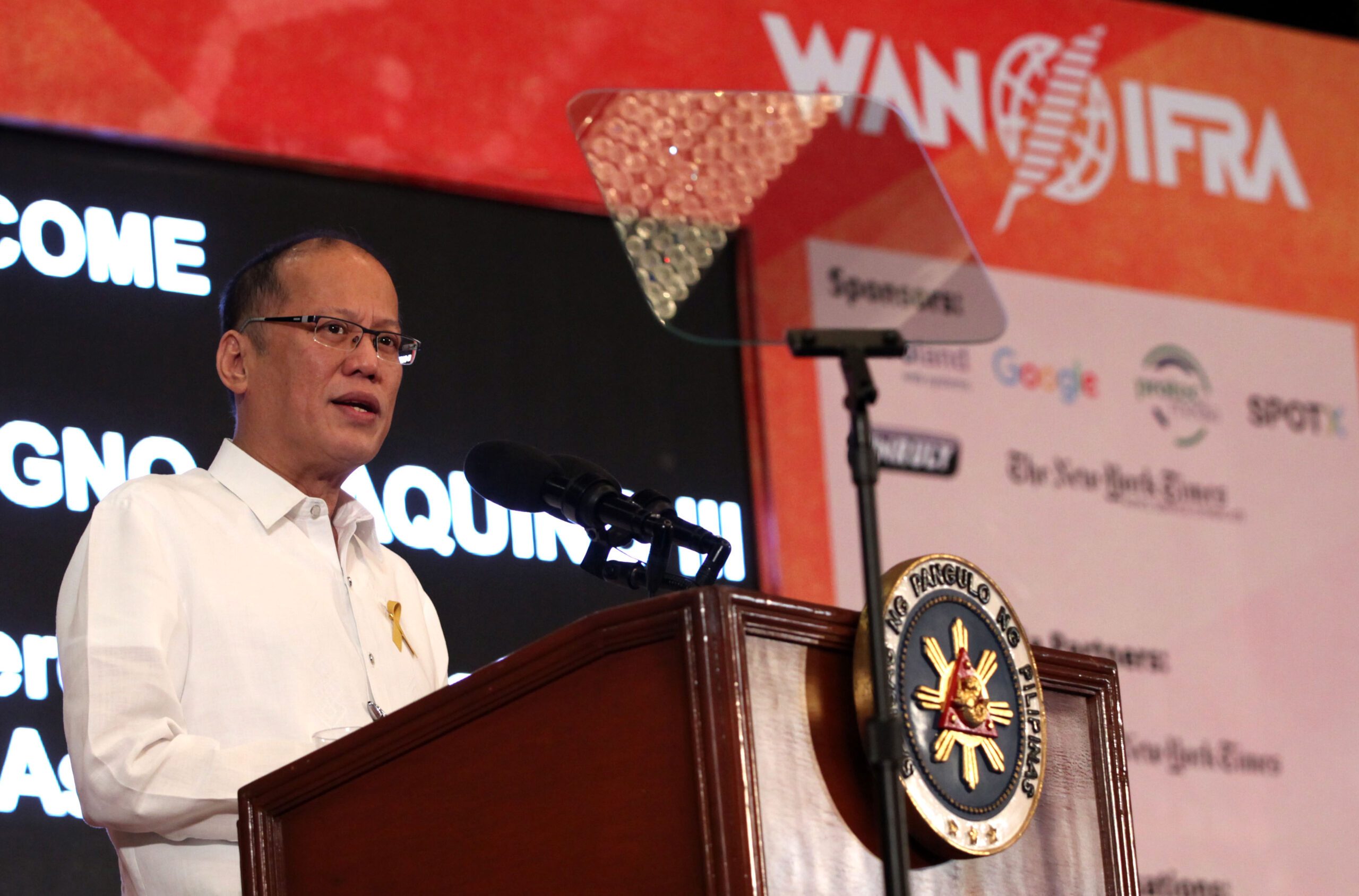SUMMARY
This is AI generated summarization, which may have errors. For context, always refer to the full article.

MANILA, Philippines (UPDATED) – Its dispute with China in the West Philippine Sea (South China Sea) has prompted the Philippines to consider having a “submarine force,” President Benigno Aquino III revealed on Wednesday, March 30.
Aquino bared the plan in a forum with media executives from all over Asia at the at the Manila Hotel, while explaining how Philippine policies have been affected by China’s massive reclamation and military build-up in the West Philippine Sea under its 9-dash-line principle.
“It does impact on our policies in that we’ve had to invest in our maritime domain awareness. We’ve had to accelerate modernization of even our Armed Forces for our own self-defense needs,” Aquino said.
“We might have to undergo various aspects of our own military capabilities that had never been part of our needs. For instance, we are a natural transit point into the Pacific, and we are studying whether or not we do need a submarine force,” he added.
Aquino stopped himself from divulging more of the Philippines’ defense plans but added, “the bottom line is the situation does call upon us to devote a lot more resources than previously.”
Beijing has reclaimed more than 2,900 acres of land from the West Philippine Sea in less than two years in an intensive island-building campaign, and has deployed surface-to-air missiles on a disputed island there, according to Taipei and Washington.
Defense spending
China’s military significantly dwarfs that of the Philippines, despite Aquino’s efforts to boost defense spending to record levels and the acquisition of new warships and fighter jets. (READ: PH air force returns to supersonic age: Fighter jets arrive in Clark)
This year, China’s proposed defense spending of 954 billion yuan ($147 billion) is approximately 59 times that of its small neighbor, which stands at P115.8 billion ($2.5 billion).
The Philippines has turned to its long time ally the United States and former wartime foe Japan to boost its military hardware in order to counter China.
Aquino, however, reiterated the Philippines’ renunciation of war as an instrument of foreign policy and the government’s funding priority for economic development than defense purposes.
“We have no illusions of trying to match or trying to engage everybody in an arms race or a military build-up. We would rather put our resources to the classical economic argument of the butter side than the gun side of choosing where to put our resources in,” he said.
In a separate development, Defense Undersecretary Fernando Manalo confirmed that the Philippines had sealed an agreement to acquire two anti-submarine helicopters, but did not disclose the cost.
The Anglo-Italian AW159 helicopters will be delivered in a little over a year, said Manalo, adding they would be the nation’s first.
Economic impact
The President also said at the opening ceremonies of Publish Asia 2016 that the dispute with China has had an impact on Filipino fisherfolk who derive their livelihood from traditional fishing grounds claimed by China. (READ: China to build ‘Berlin Wall of the Sea’)
This, he said, makes if more urgent to resolve the dispute under international law. The Philippines has filed a case against China before the United Nations-backed international arbitral tribunal in The Hague, the Netherlands – a track that China was rejected.
“Let us resolve with certainty the issues that are before us: Who is entitled to what? And what is each one’s obligations relative to this entitlements? And having resolved that, then we can proceed to improve all of our relations because there is certainty in how we are supposed to deal with each other,” Aquino said.
Once that happens, the Philippine leader said it would “no longer [be] a question of whether one possesses more economic might or more military might but rather, what is it that is embodied in the laws that govern all of us that we should be religiously adhering to?”
“So if that situation is resolved, then we manage the crisis, we bring down the tensions and we avert any potential for any conflict,” he said.
Otherwise, if the Philippines does not contest China’s 9-dash-line claim, the Philippines would “practically lose” its west coast, Aquino said.
“We’re supposed to have an almost 36,000 coast line. We’re supposed to have an exclusive economic zone of 200 [nautical miles] stretching from our baselines; suddenly we’re going to lose half if we agree to this position,” he said.
Months before he turns over his office to his successor, Aquino created the National Task Force for the West Philippines which would unify national action in the disputed area.
Aquino created the body as tension erupted anew between Chinese authorities and Filipino fishermen in an area considered as traditional Philippine fishing grounds – Bajo de Masinloc (Scarborough Shoal) – 124 nautical miles off the coast of Zambales province. (READ: PH: ‘Disconcerting that nobody is stopping China’) – with reports from Agence France-Presse/Rappler.com
US$1 = P46.13
Add a comment
How does this make you feel?
There are no comments yet. Add your comment to start the conversation.